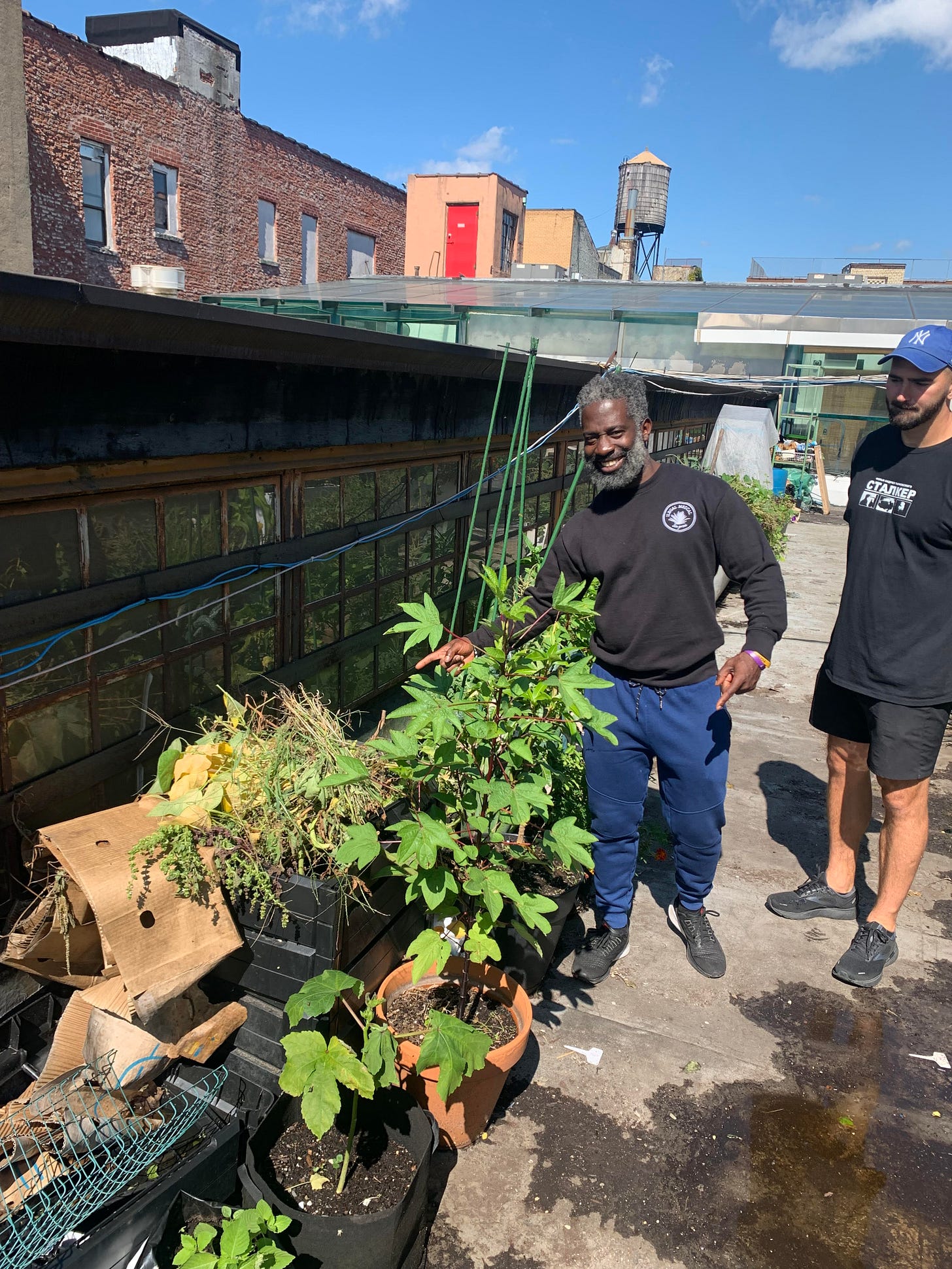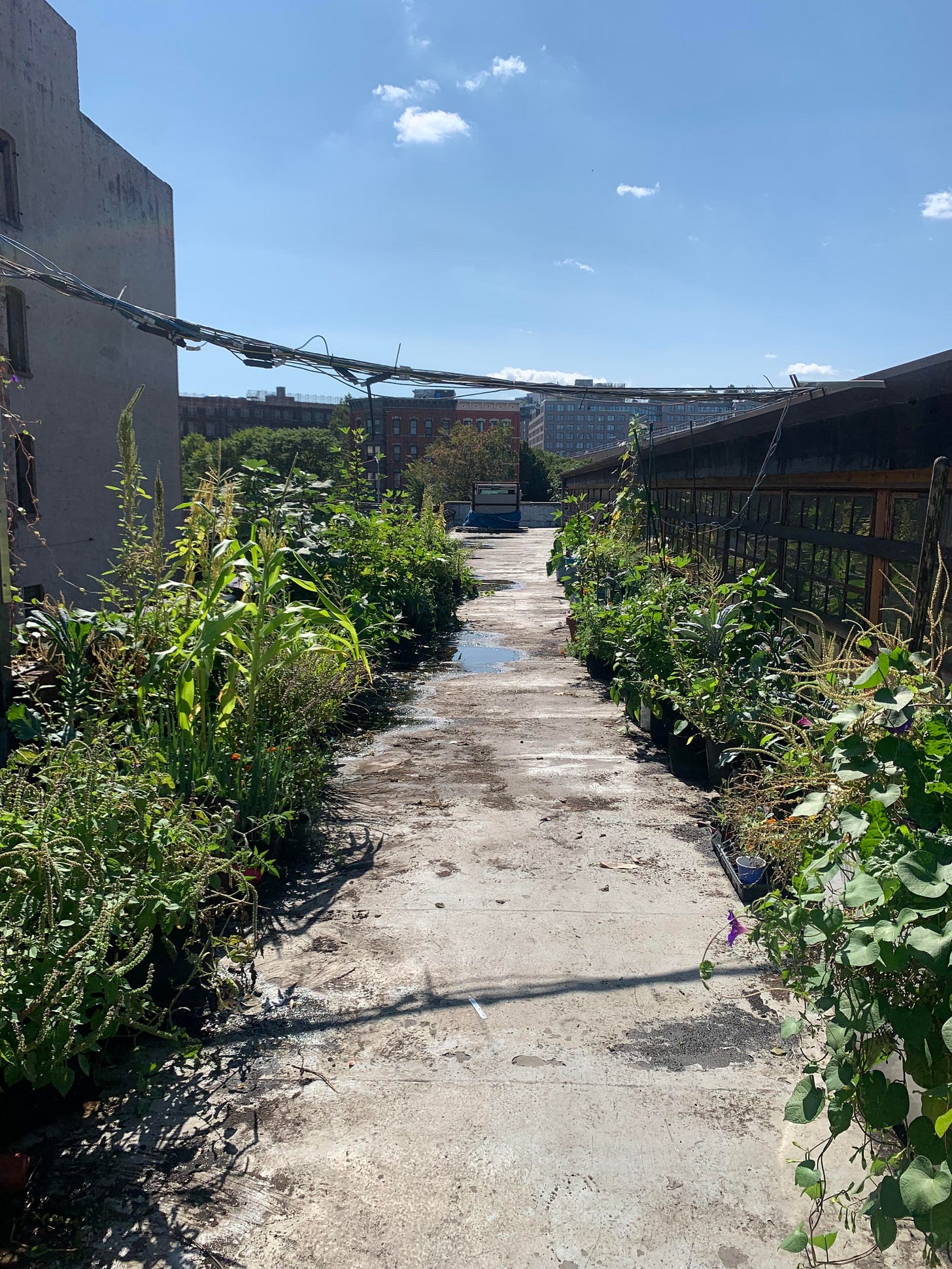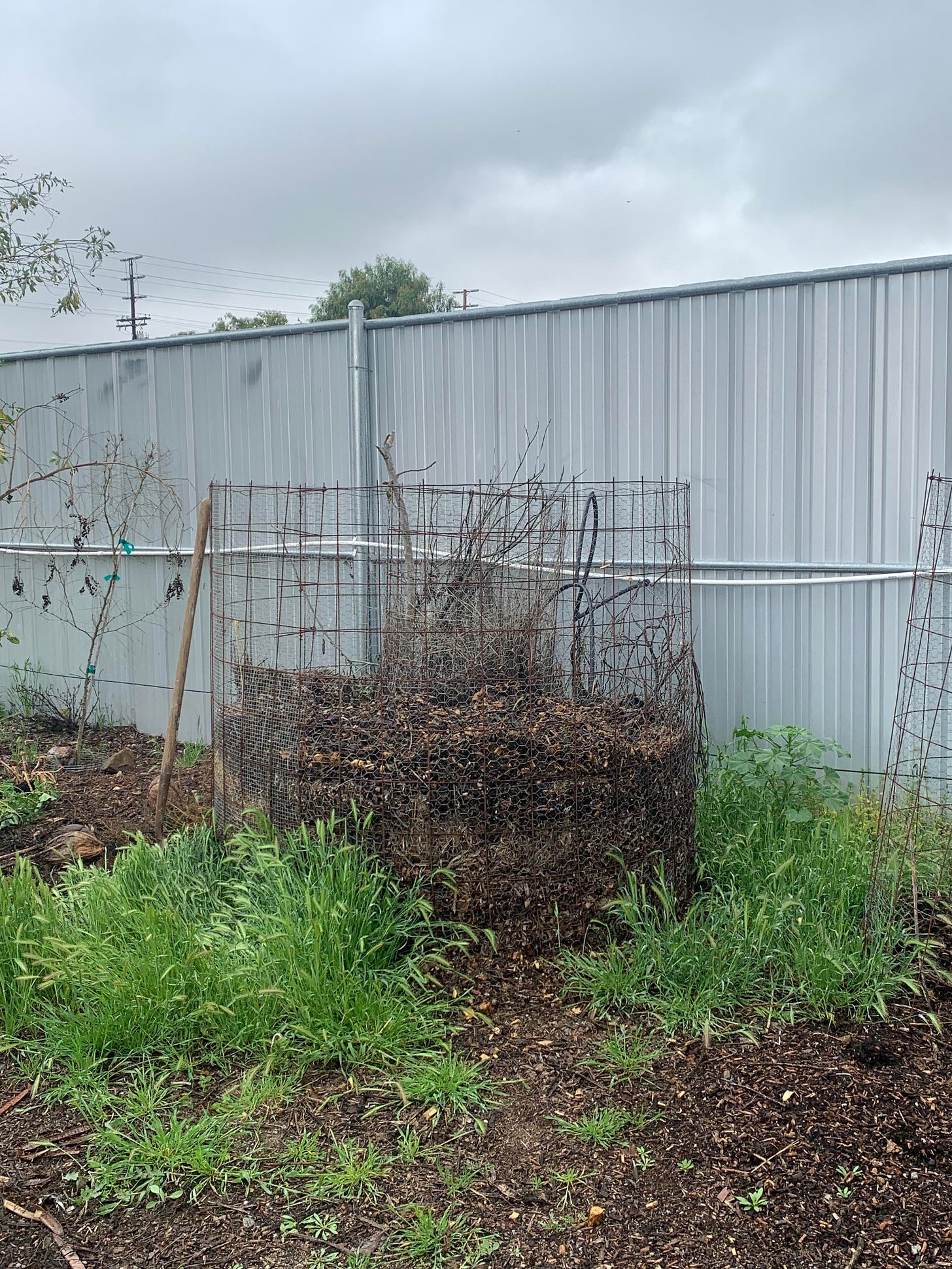Hello-
Some housekeeping
A few days ago, Substack featured this newsletter in their app. My subscriber count jumped immediately, which is exciting—but made me thoughtful. I started publishing “The Rot” almost a year and a half ago and I’ve always said that it would be free to all. This made sense for a small subscriber base of hyper-engaged, compost-obsessed folks like myself. As my subscriber base grows, though, the barometer of average interest starts to fluctuate. I have more readers, but I’m guessing fewer of them are here to read about compost every single week.* I’m starting to realize that a paywall is more than just a paycheck—it’s also a meaningful filter for my readers, and a way for them to signal the degree of their desired engagement.
So, I’m going to start experimenting with actually utilizing paid subscriptions. They will run you $2/month. Those two bucks gets you more frequent content and more direct access to me for your questions, thoughts, concerns, compost letters. If you don’t want to upgrade, that’s wonderful and I don’t mind at all (I promise). You’ll receive a free letter ~monthly, which could be the perfect cadence for you. If you would like to upgrade to paid and cannot afford to at this time, I am exceedingly and sincerely happy to comp your subscription. Just reply to this newsletter and let me know. Or, you know, to say hi and introduce yourself and tell me what made you hit ‘subscribe.’
I’d love to meet you.
*I haven’t written in a couple weeks, though, sorry! I’ve been traveling.
Compost and big cities
Speaking of traveling, I’ve been in New York.
Being here is reminding me that an enormous number of people in the world live in expensive, small spaces alongside dozens or maybe hundreds of others, and that this presents an extraordinary psychic obstacle to composting. Where? How? etc. I’ve also never felt so aware that this is a city of millions residing on a skin of concrete that separates most of its inhabitants from any basic interaction with the earth. Many of us don’t even live on the ground. Rather, we ascend into willowy apartment buildings each night and sleep, technically, while hovering in space. This is fine, of course. Housing density is crucial and vertical living has benefits —it’s just illuminating, to me, regarding the precise psychological contours of “compost reluctance” amongst city folk.
For most apartment dwellers, full-blown composting at-home is going to be a challenge. You don’t have space. There are other people to consider. There are not many places to use your finished product. There are, however, hacks. You can store food scraps in your freezer until you can put them on the curb, if you have municipally-supported composting, or bring them to a community garden, if you don’t. You can start a bokashi bucket. Bokashi “composting” isn’t quite composting, it would more accurately be characterized as odor-free and super-fast fermentation, but it’s extremely helpful if you need to stash food scraps and other waste for extended periods of time. The results can be composted whenever you have time to get them to a community compost project and/or put them out for pick up. For the braver, there’s also the one-bag method outlined in the “Rodale Book of Composting,” which I’ve written about before. This one requires building a compost in a plastic bag using purchased alfalfa meal, and then storing it under your sink.
My favorite part of New York City, though, is—of course—the rooftops. This trip, I had the pleasure of touring a rooftop garden and compost maintained by the owner of Green Fitness Studio in Brooklyn. He told me he built this garden as an homage to his childhood experiences gardening at home in Trinidad and he is particularly proud of his compost, as you can see.
Pride = justified.

Compost, fungus, and Johnson-Su (i.e. you do you)
I met a book editor a few days ago and she asked me about how to compost if you have lots of space, but just happen to be lazy. Her current compost setup, she explained, consisted of just throwing things into a large hole and ignoring them. (She called it the “pit of doom.”)
“Honestly?” I said. “No notes.”
Lazy composting happens to be my favorite composting, as it often ends with the accidental creation of the most highly-covetable compost type: the highly fungal. It’s hard to build a fungal compost pile. Time is required, and also patience. Crucially, so is leaving the pile alone. You can add new stuff, but you must not turn. Turning breaks up fungal hyphae instead of allowing them to mature and develop.
There is at least one composting method that specializes in creating this type of very fungal compost. It’s called the “Johnson-Su” after the husband-and-wife team who invented it, and it consists of building a static and well-aerated pile composed of carbon-heavy inputs that you leave completely alone for about a year. The carbon is good food for fungi, ensuring the finished product will be particularly rich with their hyphae, and the “no touch” allows time for those hyphae to grow and mature.
The Johnson-Su is a pretty advanced method of composting. It’s not for everybody, and I don’t even find it particularly lazy. It’s core principles, though, can be iterated on and utilized by my book editor friend and others like her, i.e. the “lazy.” Build a big pile in a simple, large enclosure. You can use a circle of chicken wire or some pallets with a lid fastened on top. Heap a bunch of stuff into it, making sure to use lots of high-carbon inputs, like wood chips and small branches. These also help create steady aeration throughout the pile, which is critical to accommodate fungal growth. Then, when you’re done, just forget about it. You can add new stuff as needed, of course. Throw your food scraps and yard waste on top, then cover it all with more wood chips or twigs. If it looks very dry, wet it with a hose. Whatever you do, though, do not turn it. Leave it alone. In roughly a year, you’ll have compost. That compost will probably have a lot of good fungi. This method is effective, albeit extremely unscientific. Let’s call it the "Deranged Johnson-Su System for Whoever Feels Like It and Is Crazy.”
There are a lot of reasons to want a fungal compost pile. One is that it takes time and, like a fine wine, the results can exude the pleasure of rarity. Another is more straight-forward. Fungi are a critical component of overall soil function, helping to cycle nutrients, store moisture, and provide resilience against pathogens. If you can, building a fungal compost is a great way to restore health and microbial diversity to whatever particular patch of earth you have a duty to steward.
Love,
Cass





I've read about Johnson-Su systems and even met Johnson and Su at a conference a few years ago and was very impressed with the results they get in terms of crop output and the microbial diversity of their compost. The system is not for me, though, because I want to have access and continually add things to my compost, but I only dig into and process the top layer of my piles, about a foot deep. The pile is in a big wooden bin about waist high, so turning and forking and shoveling don't require bending and straining my back. But the bottom layer consists mostly of brush and wood waste that I put there when I started the system, and that material has been undisturbed for 5 years. So I assume there is plenty of fungal activity at that lower level. When I dig down that deep the compost is black and compacted like dense soil, with just an occasional fat worm at work, quite different from the lively top layers.